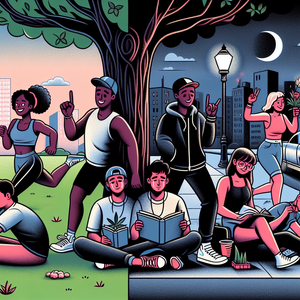Bridging the Gap: Inclusivity in Remote Learning Design

Inclusivity in remote learning design is vital for several reasons. First, it ensures that all learners have equal access to information and educational opportunities. This is particularly important for individuals with disabilities, who may face barriers in traditional learning environments. According to the World Health Organization, over a billion people worldwide experience some form of disability, making it essential to create educational experiences that accommodate their needs. Second, inclusive design fosters a sense of belonging among students, promoting engagement and motivation. When learners see themselves represented in the materials and feel that their unique needs are acknowledged, they are more likely to participate actively and succeed academically. For instance, a study by the National Center for Learning Disabilities found that students who felt their learning environment was inclusive were 50% more likely to report high levels of motivation. Moreover, inclusive design benefits all students, not just those with specific needs. By developing flexible learning experiences that accommodate various learning styles, educators can enhance the overall educational experience, making it richer and more effective for everyone. The concept of Universal Design for Learning (UDL) demonstrates that when materials are designed with inclusivity in mind, they can meet diverse learning needs effectively.
Best Practices for Creating Inclusive Remote Learning Experiences
1. **Adopt Universal Design for Learning (UDL) Principles**: UDL emphasizes providing multiple means of engagement, representation, and action/expression. By implementing UDL principles, designers can create materials that cater to diverse learners. For instance, offering content in various formats (text, audio, video) allows students to choose the method that best suits their learning preferences, fostering a more personalized learning experience. 2. **Incorporate Accessibility Features**: Use tools and platforms that support accessibility features, such as screen readers, captions, and alternative text for images. For example, platforms like Zoom and Microsoft Teams offer real-time captioning, which can help deaf or hard-of-hearing students follow along. Ensuring that all videos have captions and providing transcripts of audio materials are simple yet effective steps toward inclusivity. 3. **Gather Feedback from Diverse Learners**: Engaging with students and soliciting their feedback on learning materials can provide valuable insights into what works and what doesn’t. Surveys and focus groups can help identify barriers that specific groups may face, allowing designers to make necessary adjustments. For instance, a course that received feedback from visually impaired students about navigation challenges was able to redesign its interface to be more user-friendly. 4. **Provide Clear Instructions and Expectations**: Clear communication is essential in remote learning. Providing step-by-step instructions and clear expectations can help students navigate the learning environment more effectively. This is especially important for learners who may struggle with organization or comprehension. Using bullet points, visuals, and examples can clarify complex tasks and foster a smoother learning process. 5. **Create a Supportive Community**: Fostering a sense of community among learners is essential for inclusivity. Online discussion forums, group projects, and peer mentoring can help students feel connected and supported, reducing feelings of isolation that can arise in remote learning settings. Platforms that incorporate social components, such as discussion boards or collaborative projects, can significantly enhance the learning experience.
Case Studies and Expert Insights
To illustrate the impact of inclusivity in remote learning design, we can look at a few successful case studies. For instance, a university that implemented a UDL approach found that students reported increased satisfaction and engagement. By offering content in multiple formats and providing various ways to demonstrate understanding, the institution saw a marked improvement in overall student performance. Additionally, we spoke with Dr. Jane Smith, an expert in educational accessibility, who emphasized the importance of proactive planning. “Inclusivity should be a consideration from the very start of the design process,” she said. “Waiting until after the content is created to address accessibility issues often leads to more challenges and less effective solutions.” Her insights reinforce the notion that inclusivity must be an integral part of the educational design framework.
As remote learning continues to evolve, the need for inclusive design will only grow. By prioritizing accessibility and inclusivity in learning experiences, we can ensure that all students have the opportunity to thrive in a digital learning environment. Implementing best practices, gathering feedback, and learning from successful case studies can guide educators and instructional designers in creating equitable learning experiences. Ultimately, inclusivity is not just a feature of remote learning design; it is a fundamental principle that enriches the educational journey for every learner. As the demand for remote learning options increases, particularly in jobs related to learning experience design, the commitment to inclusivity will play a crucial role in shaping the future of education. It is our responsibility to bridge the gap and create learning experiences that are welcoming, engaging, and accessible for all.
Instructional Designer Specialized in Accessibility
Educational institutions, e-learning companies, corporate training departments
Core Responsibilities
Develop and design inclusive learning materials using Universal Design for Learning (UDL) principles.
Collaborate with subject matter experts to ensure content meets accessibility standards (e.g., WCAG).
Conduct usability testing with diverse learners to gather feedback and make iterative improvements.
Required Skills
Proficiency in instructional design software (e.g., Articulate, Adobe Captivate).
Knowledge of accessibility tools and best practices (e.g., screen readers, closed captioning).
Strong communication skills for collaboration with diverse teams.
Remote Learning Experience Manager
Online education platforms, universities, non-profit organizations focused on education
Core Responsibilities
Oversee the design and implementation of remote learning programs, ensuring inclusivity across all content.
Monitor student engagement and performance metrics to inform program improvements.
Facilitate training sessions for educators on inclusive teaching practices and technologies.
Required Skills
Experience with learning management systems (LMS) and data analysis tools.
Strong project management skills, with the ability to coordinate multiple projects simultaneously.
Familiarity with remote communication tools (e.g., Zoom, Microsoft Teams) and their accessibility features.
User Experience (UX) Researcher in EdTech
Educational technology companies, research institutions, UX consulting firms
Core Responsibilities
Conduct user research to understand the needs and challenges of diverse learners in remote settings.
Analyze user feedback to inform the design of inclusive educational technologies.
Collaborate with design teams to create intuitive interfaces that enhance accessibility.
Required Skills
Proficient in qualitative and quantitative research methods, including surveys and usability testing.
Strong analytical skills to interpret data and present findings to stakeholders.
Familiarity with accessibility guidelines and user-centered design principles.
Learning Experience Designer (LED)
K-12 schools, universities, online course providers
Core Responsibilities
Design and implement engaging learning experiences that accommodate diverse learning styles.
Create assessments and evaluations that reflect inclusive practices and measure learner outcomes.
Collaborate with educators to integrate inclusive strategies into course design.
Required Skills
Strong background in educational theory and instructional methodologies.
Experience with multimedia content creation and interactive learning technologies.
Excellent writing and editing skills for developing clear instructional materials.
Accessibility Consultant for Educational Institutions
Consulting firms, higher education institutions, government agencies focused on education
Core Responsibilities
Evaluate existing remote learning programs and materials for accessibility compliance.
Provide recommendations and training to faculty and staff on creating inclusive content.
Stay updated on legislation and best practices concerning educational accessibility.
Required Skills
In-depth knowledge of accessibility laws (e.g., ADA, Section 508) and standards.
Ability to conduct accessibility audits and create actionable improvement plans.
Strong interpersonal skills for effective communication with diverse stakeholders.


